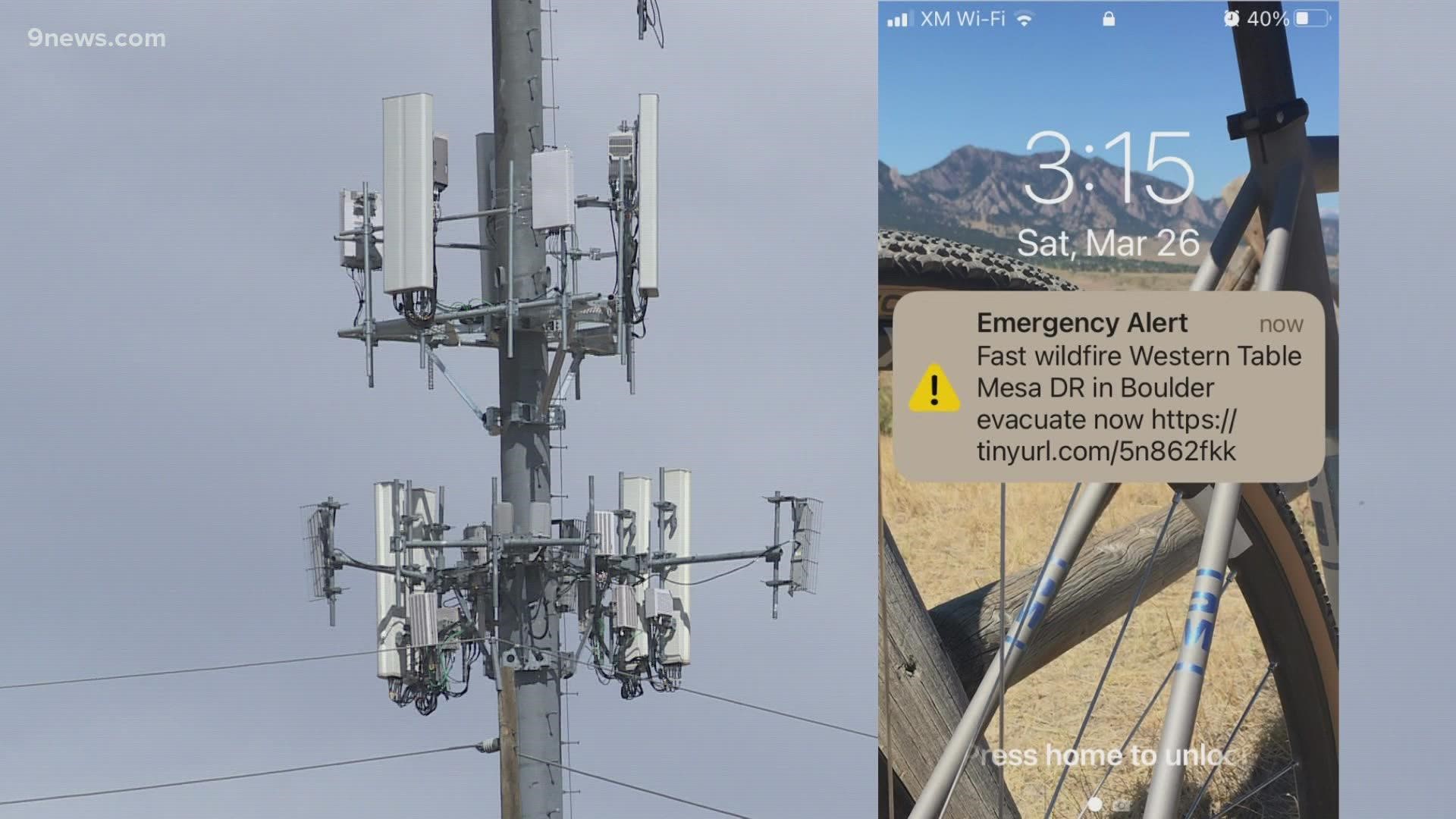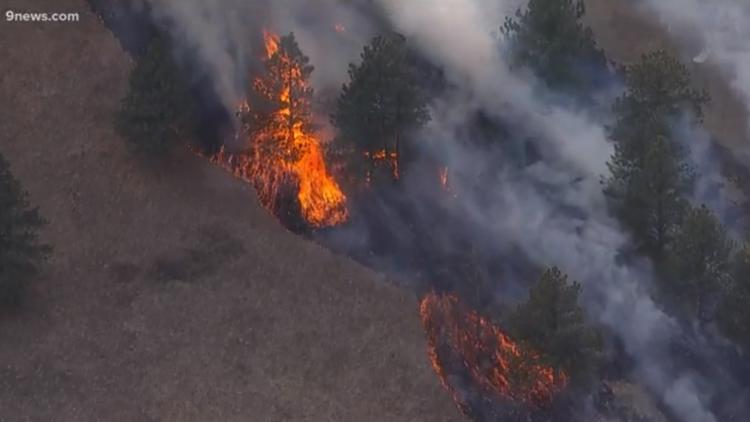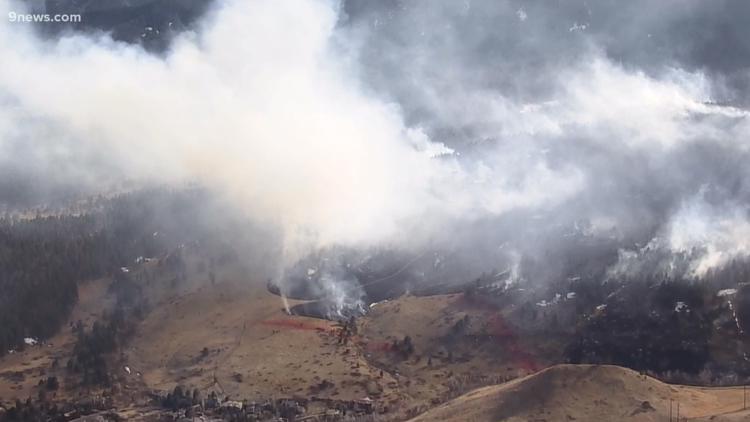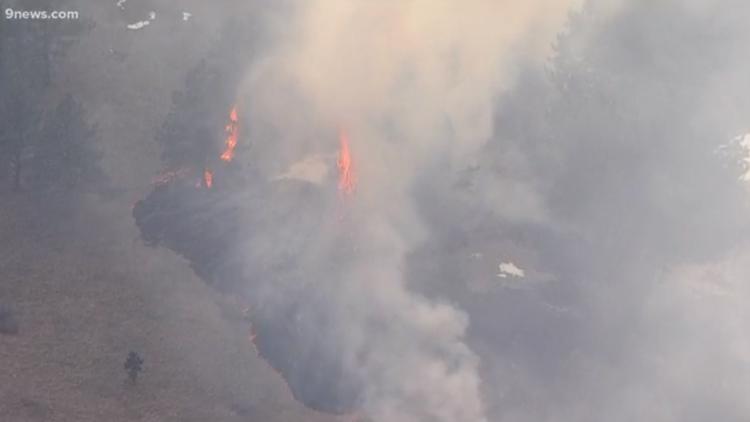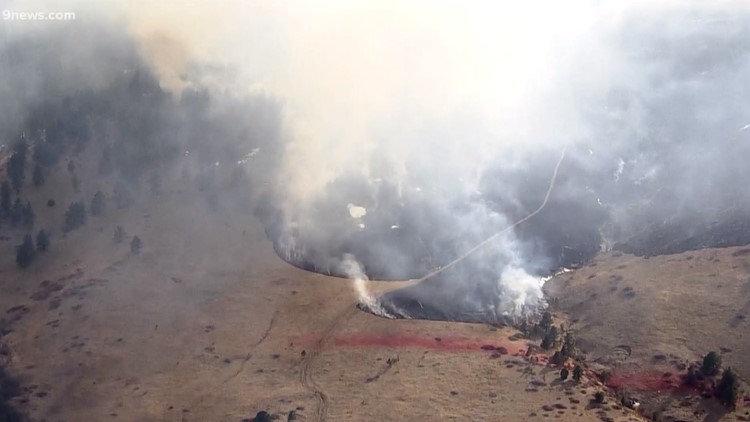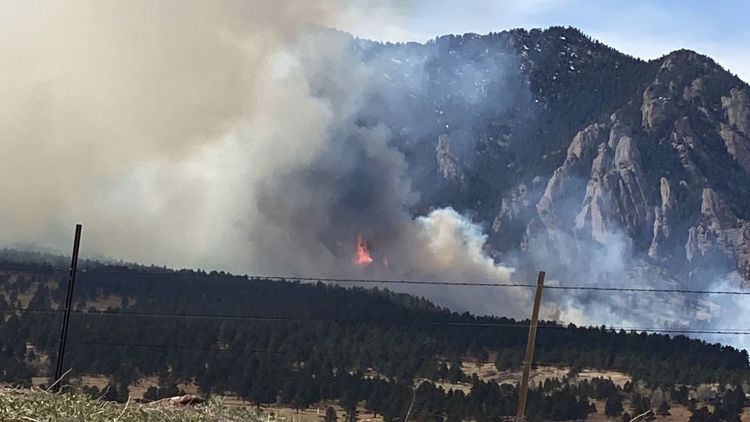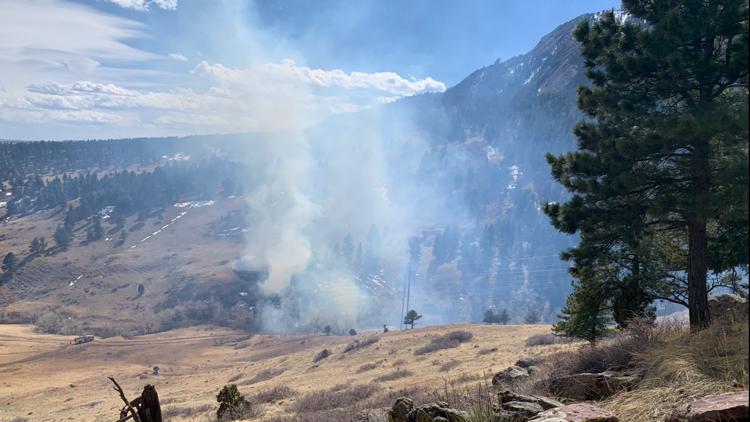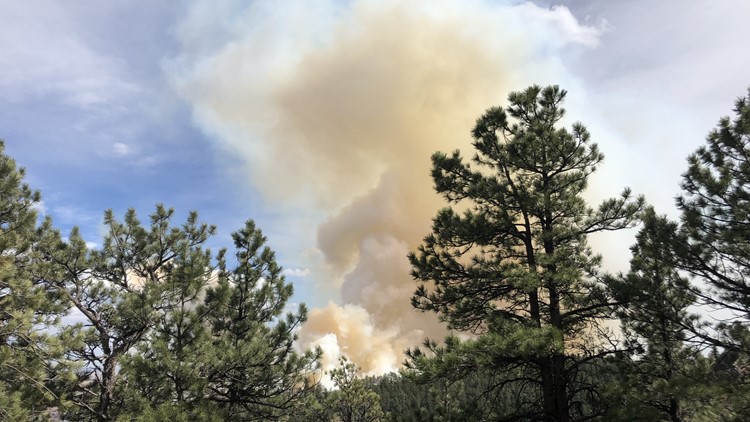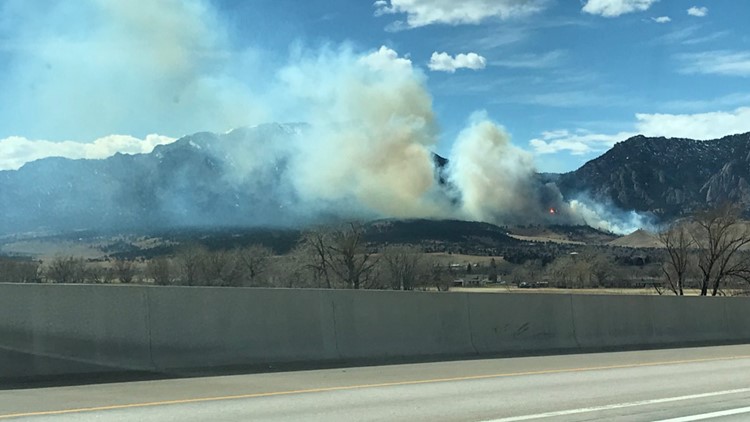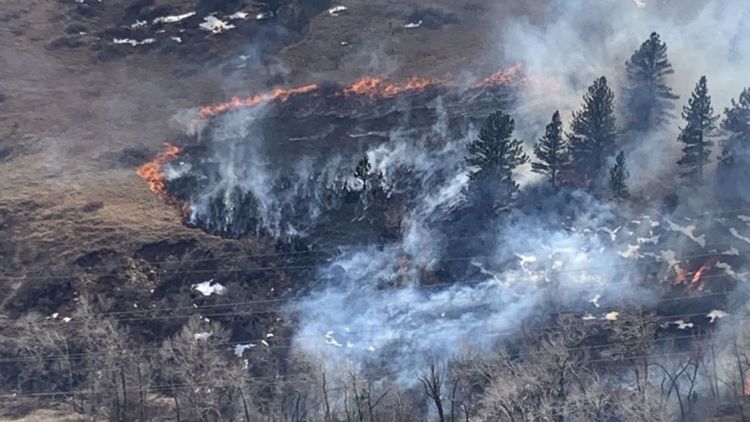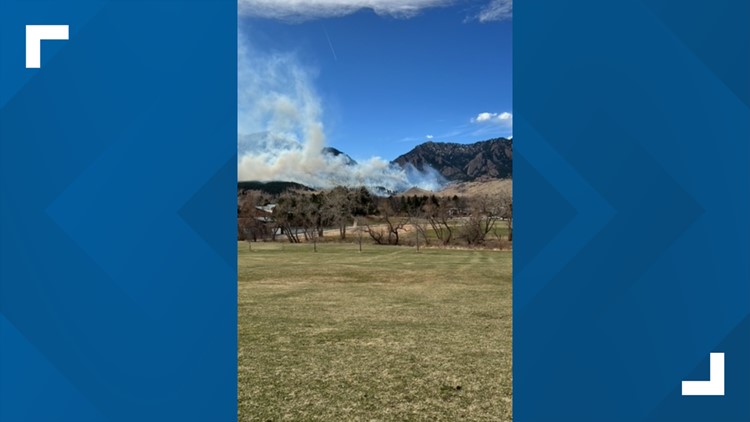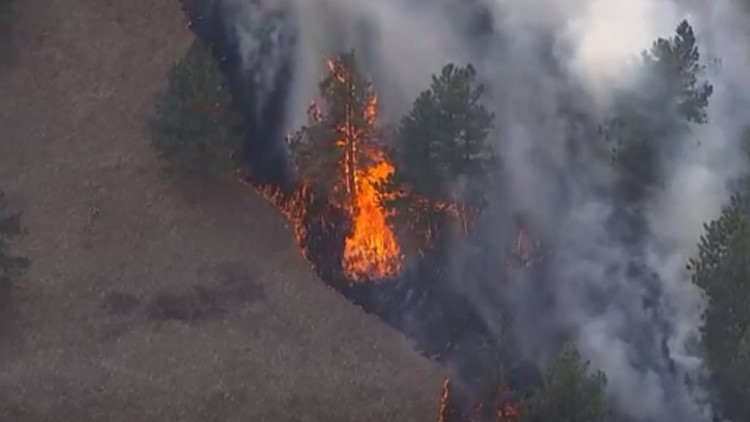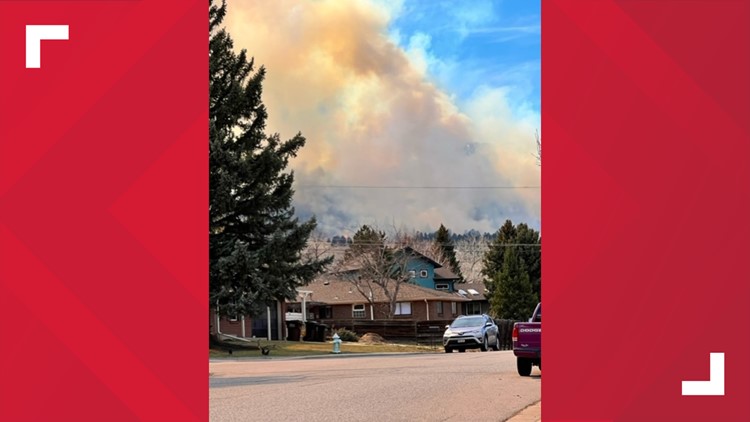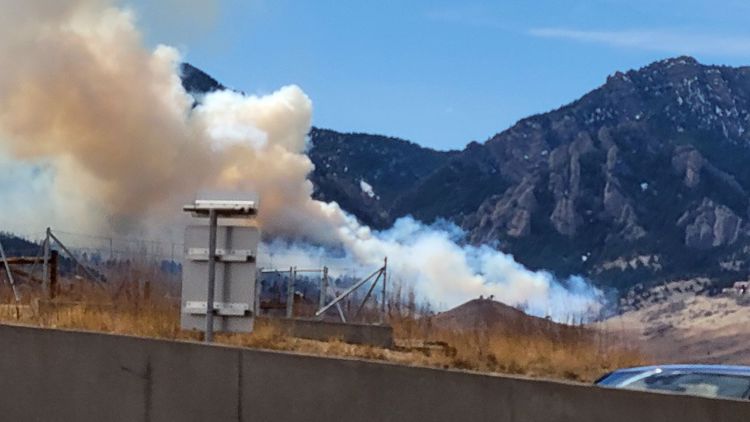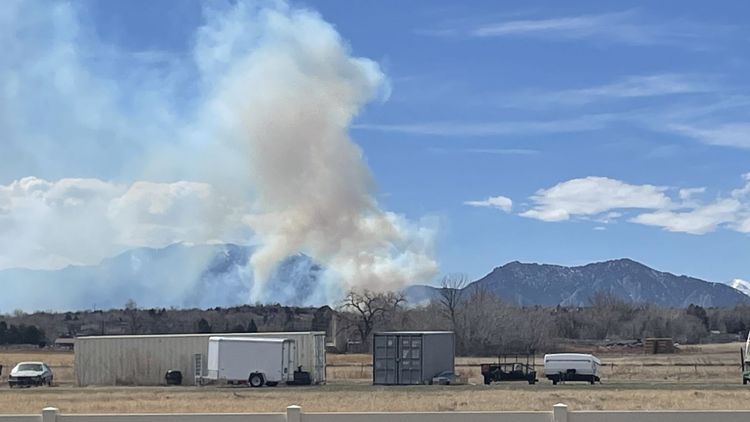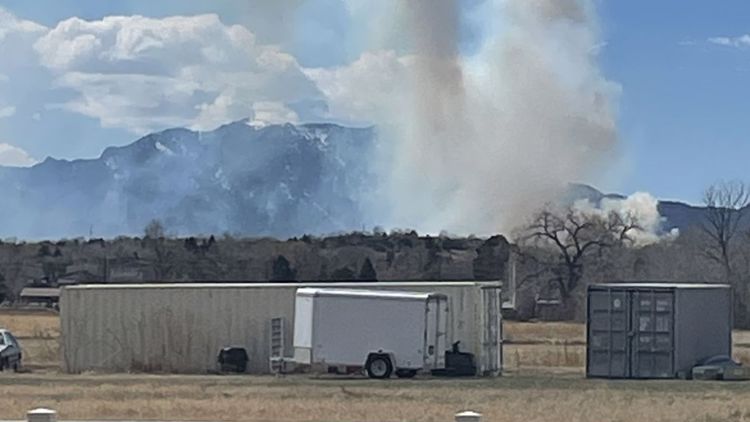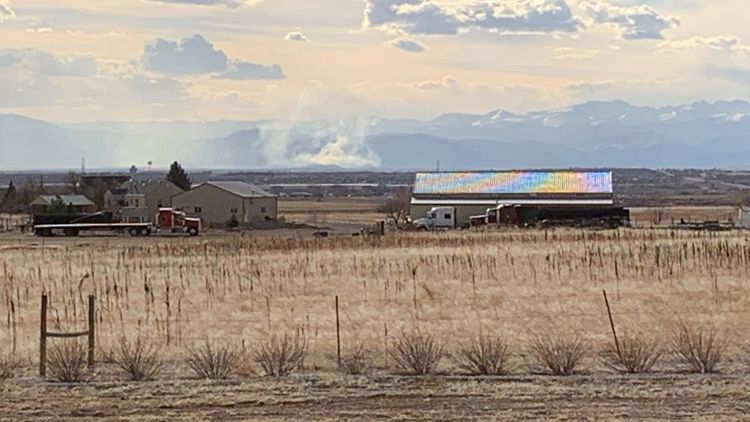BOULDER, Colo. — When a wildland fire grew near the National Center for Atmospheric Research in Boulder, the city decided to use a tool that wasn’t available during the destructive Marshall fire three months earlier, a wireless emergency alert.
The city of Boulder had set up the system 12 days before Saturday’s NCAR Fire. It allowed the city’s dispatch center to send a message to all cell phones in the geographic area near the fire telling people to evacuate immediately.
But it wasn’t perfect.
“The limitations of the system were shown,” dispatch center director Brad Riggin told 9NEWS on Monday. “It definitely overshot our polygon by quite a bit depending on the age of your handset and the technology you had.
Riggin said he heard reports of people in Longmont, Lafayette and Broomfield getting the message, far beyond the polygon he drew for the message, which was intended to go to phones inside an area bordered by NCAR, Baseline Road, U.S. 36 and Broadway. 9NEWS also heard from people in Louisville and Superior who received the alert.
Wireless Emergency Alerts, or WEAs, are sent through a federal alert system called Integrated Public Alert and Warning System (IPAWS), which also includes NOAA weather radio alerts and the Emergency Alert System. The IPAWS system uses a different cell tower technology than regular calls and text messages do, which means alerts can reach people when cell networks are overwhelmed.
PHOTOS: NCAR Fire in south Boulder
An update to the technology a few years ago created better geo-tracking for messages. Officials with the Federal Emergency Management Agency say alerts should only bleed over geofenced lines by about a tenth of a mile with the new technology. But anyone with older phones may still see some longer bleed over of messaging.
When WEA was launched in 2012, alert messages could only be 90 characters. But newer upgrades to the technology allow messages of 360 characters or more, which allows emergency managers more clarity in messaging about an incident in case messages bleed over.
During Saturday’s fire, the city of Boulder chose only to send a 90-character message without details about specific evacuation areas. The alerts sent by the city included a link to the Boulder Police Twitter account.
“In the consideration of time, we chose to go with the 90-character and push that out, so we didn’t have to type another 360-character as well,” Riggin said.
“It’s not currently [in protocol], but that may change when we do the after action reports.”
South of Boulder, another community sent its first WEA alert last week. Chaffee County officials chose the alert to warn people about evacuations during a wildfire in an area near Buena Vista.
“We were getting reports of some phones in Teller County, some in Park and some on the south side of the county,” said Richard Atkins, emergency manager of Chaffee County.
Atkins says something odd happened with the alert they sent. He said everyone inside the actual border of the polygon they drew got the full message with details about evacuations. Outsiders who received the message got a vague alert about pre-evacuations that made no mention of a location or what the threat actually was.
Atkins said the county is working with the vendor that sends the message to IPAWS, Everbridge, to sort out what happened.
“It did hit the area that we intended it to,” he said. “Yes it went outside the area… and the more and more we can educate our public on the limitations and the issues with WEA – they’re more understanding.”
Have a tip about this or any other story? E-mail 9News reporter Steve Staeger at steve@9news.com.

